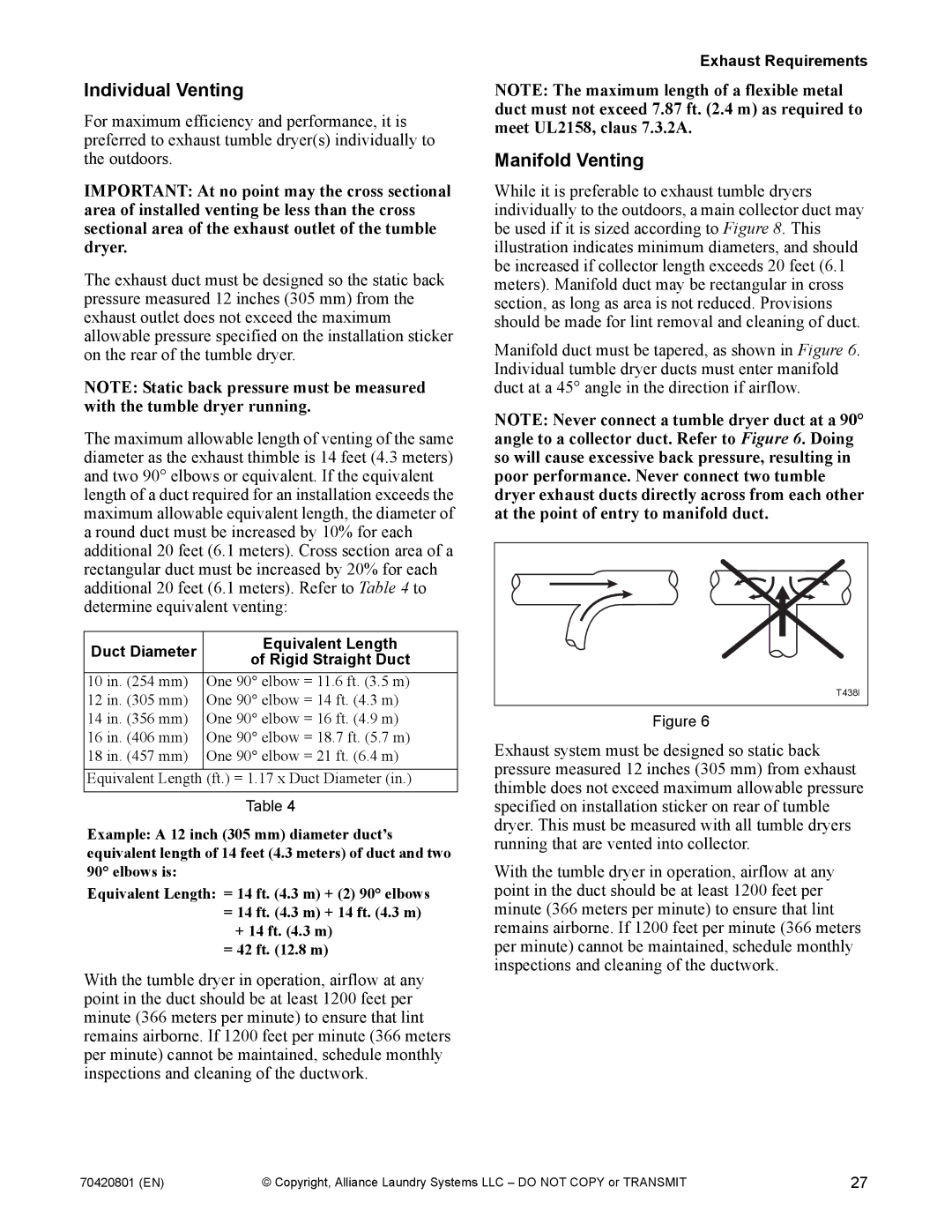907003062 specifications
Alliance Laundry Systems has long been recognized as a leader in the commercial laundry industry, providing innovative solutions that enhance operational efficiency and user experience. One of its standout offerings is the Alliance Laundry Systems model 907003062. This model is a robust piece of equipment designed for high-performance washing needs in a variety of commercial settings, from laundromats to hotel and institutional laundry facilities.At the heart of the 907003062 is its powerful motor that ensures efficient and effective cleaning performance. The model features a high extraction speed, which not only reduces drying time but also helps to save energy. This efficiency is critical for high-volume operations looking to optimize workflow and reduce utility costs.
The design of the 907003062 prioritizes user-friendliness. It comes equipped with an intuitive control panel that allows operators to easily select washing cycles and settings. This feature significantly reduces the learning curve, enabling staff to become proficient quickly. Programmable settings allow businesses to customize wash programs to cater to various fabric types, ensuring garments receive the appropriate treatment without sacrificing cleanliness or quality.
Durability is another hallmark of the 907003062. Constructed with high-quality materials, this model is built to withstand the rigors of constant use in a busy commercial environment. The components are designed to resist wear and tear, ensuring longevity and reliability. This makes it a sound investment for businesses looking to avoid frequent maintenance or replacement costs.
Additionally, the 907003062 incorporates advanced technologies that promote water and energy conservation. This commitment to sustainability helps businesses reduce their environmental footprint while also appealing to the eco-conscious consumer. Features such as automatic water level adjustment and efficient detergent usage contribute to lowering operational costs.
In summary, the Alliance Laundry Systems 907003062 is a well-rounded commercial washing machine that excels in performance, durability, and efficiency. With its powerful motor, user-friendly controls, customized wash programs, and energy-saving technologies, it is an ideal solution for businesses seeking to enhance their laundry operations while maintaining high standards of cleanliness and sustainability. As commercial laundry needs evolve, models like the 907003062 set the benchmark for excellence in the industry.

